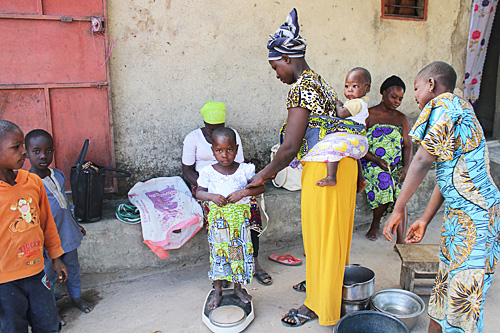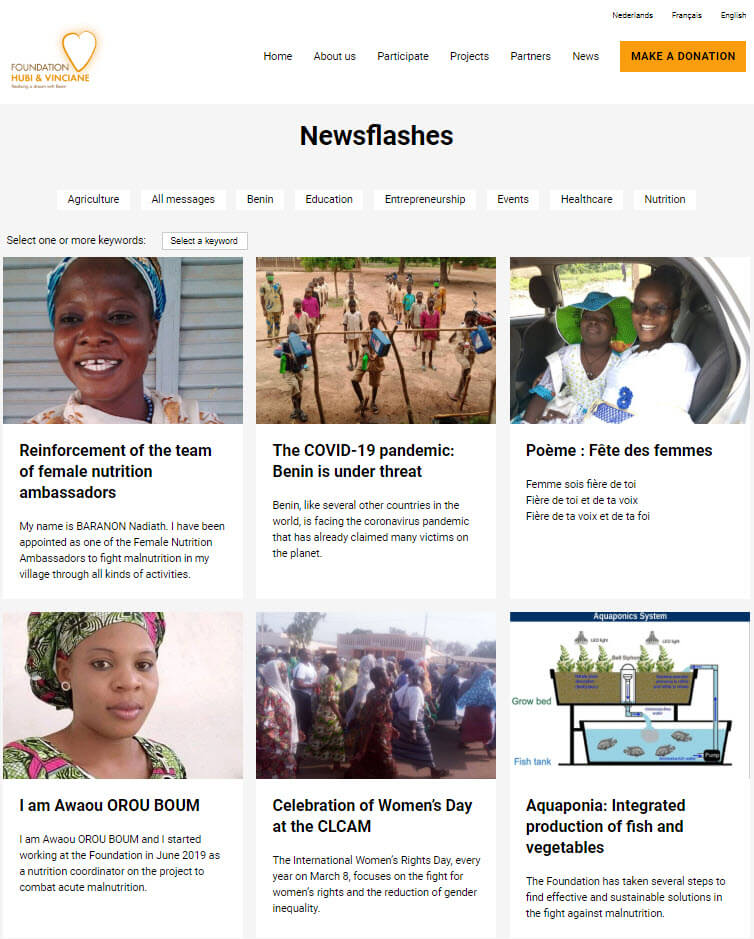The fight against malnutrition
Current situation

In 2015, the Hubi & Vinciane Foundation launched the malnutrition project with two partner hospitals Saint-Jean-de-Dieu in Boko and Saint-Martin in Papané. The Foundation’s nutritionist leads this project. Once a year, he and a team of 13 social workers examine all children under five years of age in the villages of the intervention zone. Initially, the project involved 47 villages in N’Dali. The project’s intervention area has been extended to Tchaourou with 16 other towns for he past year. Parents come with their young children to a collection point where they are systematically screened.
An initial measurement in 2015 revealed that 12% of children under 5 were severely malnourished. Today, that percentage has been reduced to 0.35%. Severely malnourished children are referred to hospitals or health centers for intensive treatment. Moderately malnourished children receive additional follow-up at home. The screening takes about one month and is only one part of the project. During the rest of the year, the nutritionist and the social workers organize preventive awareness campaigns on healthy eating. Through cooking workshops, they teach, among other things, how to make the daily diet more balanced and healthy.
The annual screening campaign in the 47 villages of N’Dali took place from November 22 to December 22, 2022. Isséré Atcha, in charge of project monitoring and evaluation, presented a brief report.
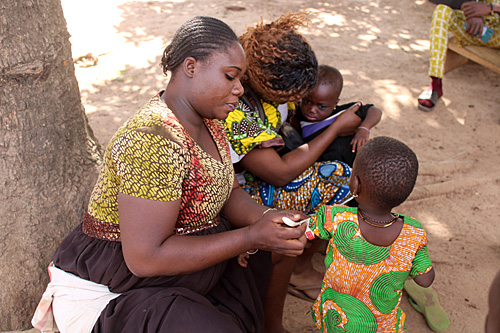
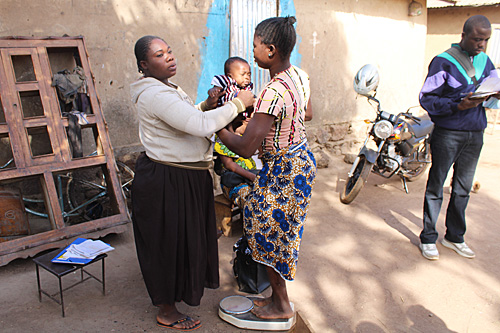
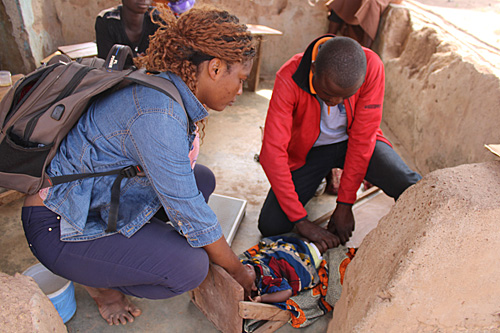
Results of the screening campaign for malnutrition
Ethical consideration
Participation in this campaign is voluntary, and no household is obliged to participate in any way. Field data collection is preceded by informed written or verbal consent from eligible individuals in each family. The facilitator cannot divulge any information collected under the pretext of being excluded. The data collected is processed collectively and anonymously.
Household characteristics
- 6021 households were surveyed. The average household size is 8.49 members, at least 2 of whom are children under 59 months of age.
- 98.89% of households have access to a source of drinking water, compared to 1.01% who continue to consume water from the marshes/rivers
- Insalubrity and waste management are a challenge. 91.13% of households throw household waste in wild dumps, further polluting the environment.
- 72.55% of households do not have a restroom. Among them, 94.83% defecate in the open.
Marital status of children screened
90.57% of children have a birth certificate
Nutritional status of screened children
11,613 children aged 6-59 months were screened during this campaign, 5847 boys and 5766 girls.
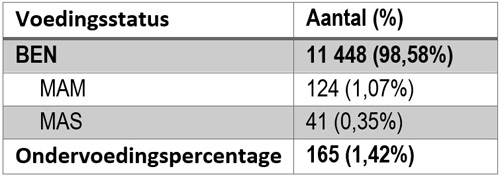
Source: Mass Screening, Nov-Dec2022, FHV
Most children have good nutritional status. Out of 100 children screened, 98 are nutritionally healthy, and two are sick. The overall malnutrition rate is 1.42% in the 47 villages of N’Dali. This rate is significantly lower than the 2021 rate of 2.52% in the area.
Moderate acute malnutrition is the most frequent and affects nearly 10 (1.07%) children out of 1000. Cases of severe acute malnutrition are becoming increasingly rare and affect less than 4 (0.35%) children out of 1000.
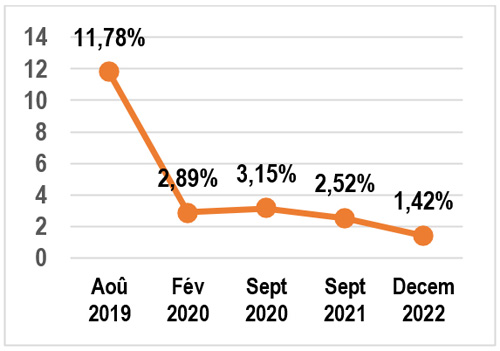
Source: Mass Screening, Nov-Dec2022, FHV
We are pleased to note that overall, the level of malnutrition (moderate and severe together) gradually decreases. From a rate of 11.78% in 2019, we have gone to 2.89% in 2020 and 1.42% in 2022. In intervals of 4 years of intervention, the malnutrition rate has decreased by more than 10.36 points. Nevertheless, follow-up and preventive actions by the nutritionist and social workers are necessary.


